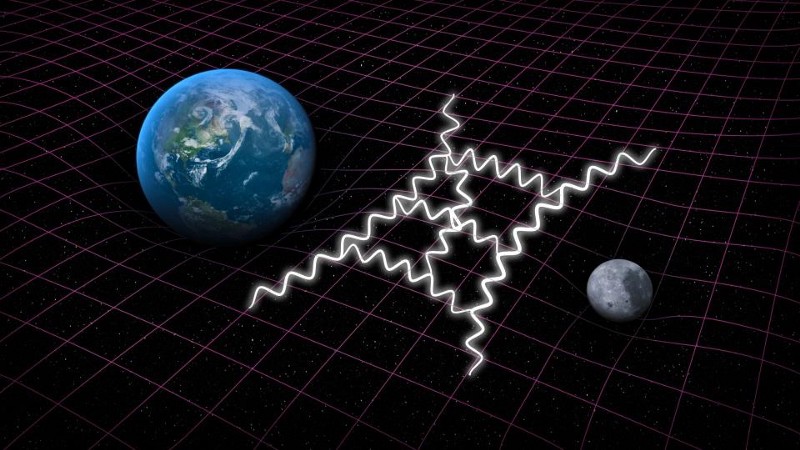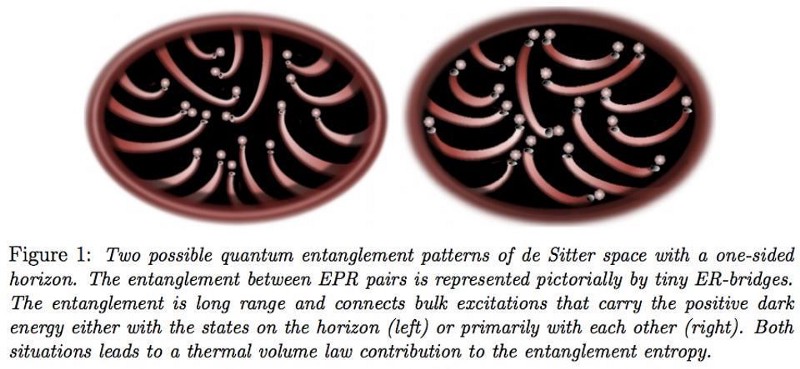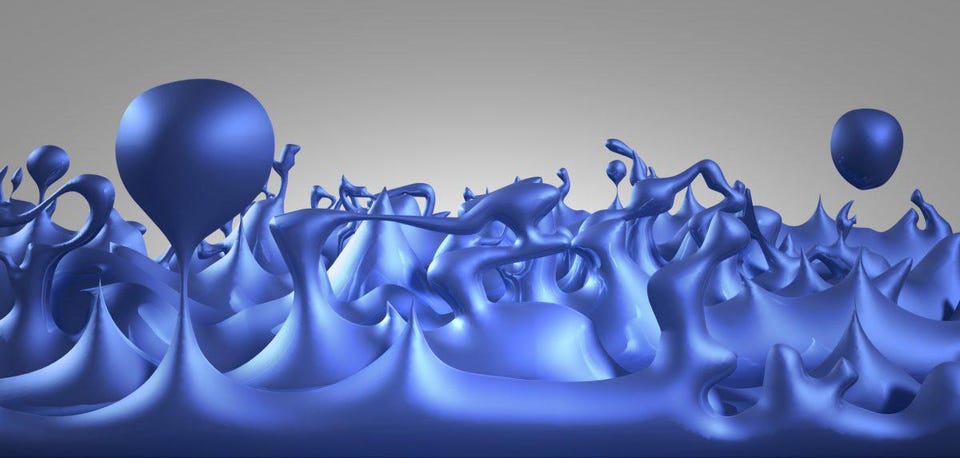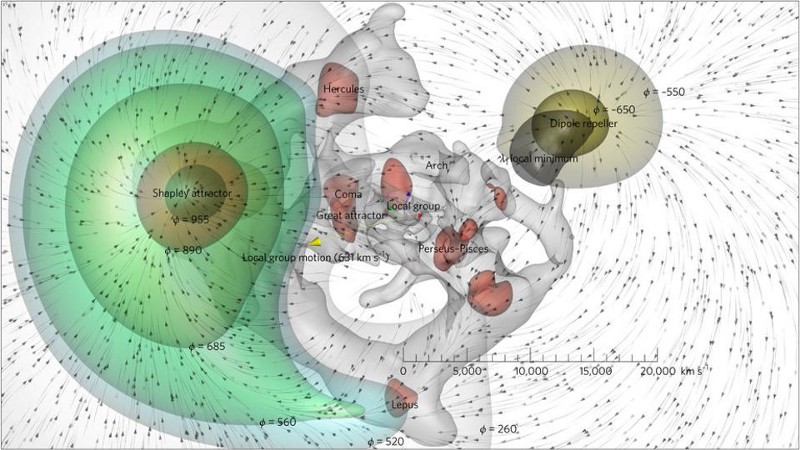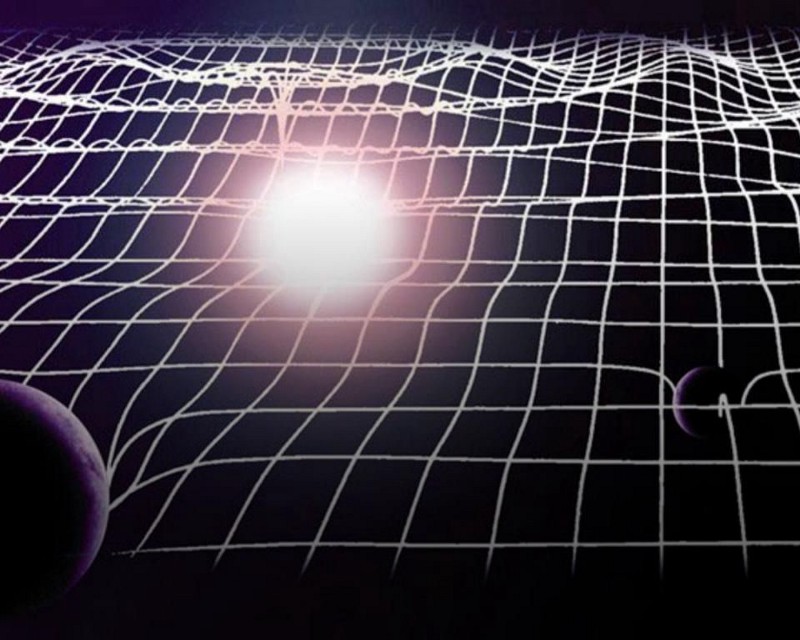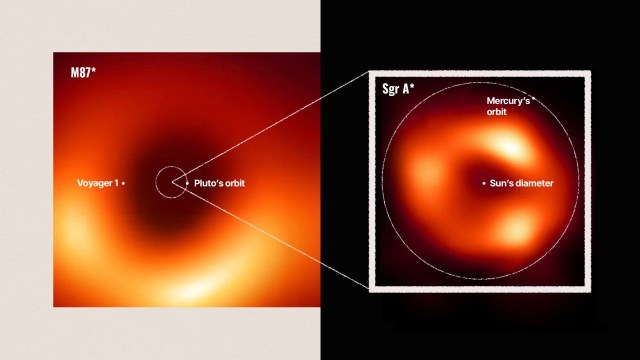How fast is gravity, exactly?

- Throughout history, scientists have proposed many answers for the exact speed of gravity.
- Broadly speaking, the two main propositions have been that gravity is either infinitely fast or as fast as the speed of light.
- Thanks to observations of gravitational waves recorded in 2017, we now know that gravity and light travel at the same speed.
Of all of the fundamental forces known to humanity, gravity is both the most familiar and the one that holds the Universe together, connecting distant galaxies in a vast and interconnected cosmic web. With that in mind, a fascinating question to ponder is whether gravity has a speed. It turns out that it does, and scientists have precisely measured it.
Let’s start with a thought experiment. Suppose at this very instant, somehow the Sun was made to disappear — not just go dark, but vanish entirely. We know that light travels at a fixed speed: 300,000 kilometers per second, or 186,000 miles per second. From the known distance between the Earth and the Sun (150 million kilometers, or 93 million miles), we can calculate how long it would take before we here on Earth would know the Sun had disappeared. It would take about eight minutes and 20 seconds before the noon sky would go dark.
But what about gravity? If the sun disappeared, it would not only stop emitting light, but also stop exerting the gravity that holds the planets in orbit. When would we find out?
If gravity is infinitely fast, gravity would also disappear as soon as the Sun poofed into nonexistence. We’d still see the Sun for a little over eight minutes, but the Earth would already start wandering off, heading for interstellar space. On the other hand, if gravity traveled at the speed of light, our planet would continue to orbit the Sun as usual for eight minutes and 20 seconds, after which it would stop following its familiar path.
Of course, if gravity traveled at some other speed, the interval between when beachgoing Sun worshipers noticed the Sun was gone and when astronomers observed that the Earth was going in the wrong direction would be different. So, what is the speed of gravity?
Different answers have been proposed throughout scientific history. Sir Isaac Newton, who invented the first sophisticated theory of gravity, believed the speed of gravity was infinite. He would have predicted that the Earth’s path through space would change before Earth-bound humans noticed that the Sun was gone.
On the other hand, Albert Einstein believed that gravity traveled at the speed of light. He would have predicted that humans would simultaneously notice the disappearance of the Sun and the change of Earth’s path through the cosmos. He built this assumption into his theory of general relativity, which is currently the best accepted theory of gravity, and it very precisely predicts the path of the planets around the Sun. His theory makes more accurate predictions than Newton’s. So, can we conclude that Einstein was right?
No, we can’t. If we want to measure the speed of gravity, we need to think of a way to directly measure it. And, of course, since we can’t just “disappear” the Sun for a few moments to test Einstein’s idea, we need to find another way.
Einstein’s theory of gravity made testable predictions. The most important one is that he realized that the familiar gravity we experience can be explained as a distortion of the fabric of space: the greater the distortion, the higher the gravity. And this idea has significant consequences. It suggests that space is malleable, similar to the surface of a trampoline, which distorts when a child steps on it. Furthermore, if that same child jumps on the trampoline, the surface changes: it bounces up and down.
Similarly, space can metaphorically “bounce up and down,” although it is more accurate to say that it compresses and relaxes similar to how air transmits sound waves. These spatial distortions are called “gravitational waves” and they will travel at the speed of gravity. So, if we can detect gravitational waves, we can perhaps measure the speed of gravity. But distorting space in ways that scientists can measure is quite difficult and well beyond current technology. Luckily, nature has helped us out.
Measuring gravitational waves
In space, planets orbit stars. But sometimes stars orbit other stars. Some of those stars were once massive and have lived their lives and died, leaving a black hole — the corpse of a dead, massive star. If two such stars have died, then you can have two black holes orbiting one another. As they orbit, they emit tiny (and currently undetectable) amounts of gravitational radiation, which makes them lose energy and draw closer to one another. Eventually, the two black holes get close enough that they merge. This violent process releases enormous amounts of gravitational waves. For the fraction of a second that the two black holes come together, the merging releases more energy in gravitational waves than all of the light emitted by all of the stars in the visible Universe during the same time.
While gravitational radiation was predicted back in 1916, it took scientists nearly a century to develop the technology to detect it. To detect these distortions, scientists take two tubes, each about 2.5 miles (4 kilometers) long, and orient them at 90 degrees, so they form an “L.” They then use a combination of mirrors and lasers to measure the length of both of the legs. Gravitational radiation will change the length of the two tubes differently, and if they see the right pattern of changes of length, they have observed gravitational waves.
The first observation of gravitational waves occurred in 2015, when two black holes located more than 1 billion light years away from Earth merged. While this was a very exciting moment in astronomy, it didn’t answer the question of the speed of gravity. For that, a different observation was needed.
Although gravitational waves are emitted when two black holes collide, that’s not the only possible cause. Gravitational waves are also emitted when two neutron stars slam together. Neutron stars are also burned-out stars — similar to black holes, but slightly lighter. Furthermore, when neutron stars collide, not only do they emit gravitational radiation, they also emit a powerful burst of light that can be seen across the Universe. To determine the speed of gravity, scientists needed to see the merging of two neutron stars.
In 2017, astronomers got their chance. They detected a gravitational wave and a little over two seconds later, orbital observatories detected gamma radiation, which is a form of light, from the same location in space originating in a galaxy located 130 million light years away. Finally, astronomers found what they needed to determine the speed of gravity.
The merging of two neutron stars emits both light and gravitational waves at the same time, so if gravity and light have the same speed, they should be detected on Earth at the same time. Given the distance of the galaxy that housed these two neutron stars, we know that the two types of waves had traveled for about 130 million years and arrived within two seconds of one another.
So, that’s the answer. Gravity and light travel at the same speed, determined by a precise measurement. It validates Einstein once again, and it hints at something profound about the nature of space. Scientists hope one day to fully understand why these two very different phenomena have identical speeds.
